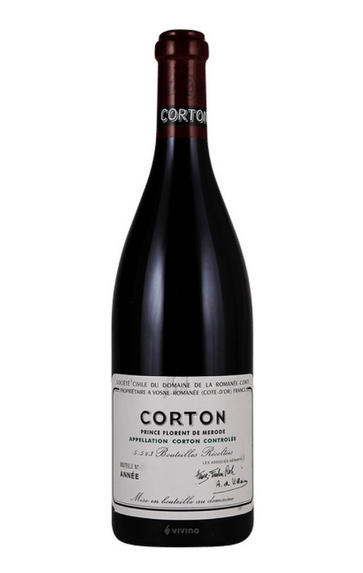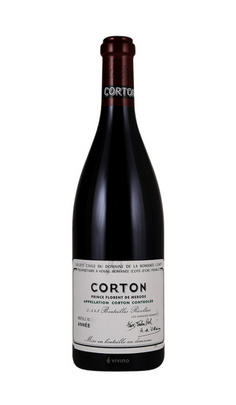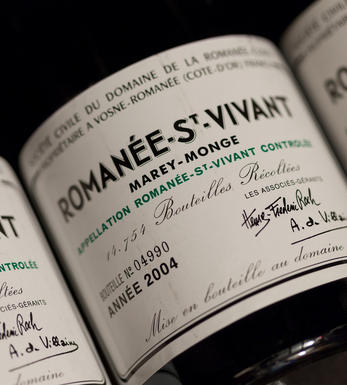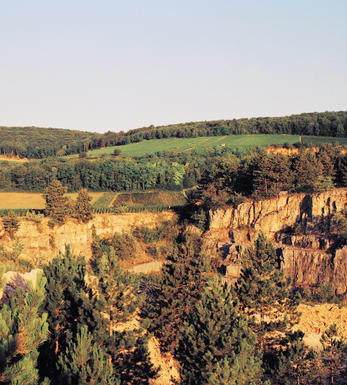
2011 Corton, Prince Florent de Mérode, Grand Cru, Domaine de la Romanée-Conti, Burgundy

Critics reviews
Harvested 2nd September, having held off for three days compared to original intentions. Very even red to orange colour. A pure and even-handed nose, more evidently part of the Domaine de la Romanée-Conti range than the 2009, while showing a little bit of the vintage green character.
Dancing graceful energy, fantastic if you do not mind a less ripe fruit style, good acidity here. Some alpine strawberries too. It will go towards rose petals in due course.
Jasper Morris MW, insideburgundy.com (July 2019)
A cool, elegant and airy nose of primarily red and dark berry scents is distinctly floral in character with subtle sauvage and earth nuances. There is good volume and reasonably good richness to the velvety and well-detailed medium-bodied flavours with reliable power and impressive length.
This is a moderately-sized wine by the appellation's standards, but it's well-balanced and should age well. The 2011 Corton is not so structured that it could not be enjoyed now though it's clear that ample upside development potential remains.
Drink from 2023 onward
Allen Meadows, Burghound.com (June 2019)
Made from the Domaine's 2008 lease of the old Prince Florent de Mérode holding of 0.5 ha of Corton-Renardes, 0.57 ha of Clos du Roi and 1.2 ha of Corton-Bressandes.
Pale bright raspberry red. Light autumnal aromas with some candied leaves and then on the palate, very silky texture with beautifully integrated sweetness and acidity. How do they manage to do such a great job compared with many other Cortons?
The lovely lightness of touch and elegance. Dances on the palate. Light tannins are almost imperceptible until the very end. Wonderfully flirtatious finish. This wine positively bounces! Great freshness.
Drink 2017 - 2032
Jancis Robinson MW, jancisrobinson.com (February 2014)
About this WINE

Domaine de la Romanée-Conti (DRC)
Domaine de la Romanée Conti is co-owned by the de Villaine and Leroy/Roch families, the former successors to Jacques-Marie Duvault-Blochet who bought the vineyard of La Romanée Conti in 1869, the latter since acquiring the shares of other descendants of Duvault-Blochet in 1942. The domaine is today run by Aubert de Villaine. Many people in Burgundy just refer to 'DRC' as "the Domaine".
The domaine has 25 hectares of vineyards, all Grand Crus. As well as the 1.8 hectare monopole La Romanée Conti, the Domaine purchased its other monopole, La Tâche, in 1933, along with significant holdings in the grand crus of Richebourg, Romanée-St-Vivant, Grands Échezeaux, Échezeaux and Le Montrachet at various points in the 19th and 20th centuries. The Domaine is the largest owners of each of the red wine grand crus.
The wines are made by Alexandre Bernier, in succession to Bernard Noblet. Whole clusters are used (no destemming) with a long vatting time avoiding excesses of heat. Yields are mind-numbingly low and the winemaking is traditional and perfectionist. These are not merely among the most sumptuous wines of Burgundy but certainly the most stylish. Ancestor Jacques-Marie Duvault-Blochet was an advocate of harvesting late in order to ensure optimum ripeness, a philosophy to which his descendants adhere today.
Jasper Morris MW, Burgundy Wine Director and author of the award-winning Inside Burgundy comprehensive handbook.

Aloxe Corton
These two Grand Cru vineyards, Corton and Corton-Charlemagne, lie astride three villages at the northern end of the Côte de Beaune: Ladoix, Aloxe-Corton and Pernand-Vergelesses. The main body of the hill of Corton faces due south, with an extended flank exposed to the east, and another facing westwards. The white wines mostly come from west and south-west expositions, along with a narrow band around the top of the hill.
The Emperor Charlemagne owned vines here in the eighth century, and legend has it that his wife insisted he planted white grapes so as not to spill red wine down his beard and clothes. Corton-Charlemagne is always white and there is also a theoretical Grand Cru appellation called, simply, Charlemagne, which is never used. Corton is almost entirely red but there are a few white wines too.Ladoix is a rarely-seen appellation, as most wine here are sold as Côte de Beaune Villages. Aloxe-Corton is better-known, but as with Ladoix the best vineyards have been designated as Corton and Corton-Charlemagne.
There are also 25 lieux-dits that may be used on wine labels, together with Corton: Les Bressandes, Les Chaumes, Clos des Meix, Clos du Roi, Les Combes, Le Corton, Les Fiètres, Les Grèves, Les Manguettes, Les Maréchaudes, Le Meix Lallemand, Les Paulands, Les Perrières, Les Pougets (Pougeots), Les Renardes, La Vigne au Saint, Les Basses Mourottes, Les Carrières, Clos des Cortons Faiveley, Les Grandes Lolières, Le Rognet et Corton, La Toppe au Vert and Les Vergennes.
- 90 hectares of village Aloxe-Corton
- 38 hectares of Premier Cru Aloxe-Corton
- 118 hectares of village Ladoix
- 14 hectares of Premier Cru Ladoix
- 72 hectares of Corton-Charlemagne. The finest from En Charlemagne (Pernand) and Le Charlemagne (Aloxe)
- 160 hectares of Corton. The best from Clos du Roi, Bressandes, Pougets

Pinot Noir
Pinot Noir is probably the most frustrating, and at times infuriating, wine grape in the world. However when it is successful, it can produce some of the most sublime wines known to man. This thin-skinned grape which grows in small, tight bunches performs well on well-drained, deepish limestone based subsoils as are found on Burgundy's Côte d'Or.
Pinot Noir is more susceptible than other varieties to over cropping - concentration and varietal character disappear rapidly if yields are excessive and yields as little as 25hl/ha are the norm for some climats of the Côte d`Or.
Because of the thinness of the skins, Pinot Noir wines are lighter in colour, body and tannins. However the best wines have grip, complexity and an intensity of fruit seldom found in wine from other grapes. Young Pinot Noir can smell almost sweet, redolent with freshly crushed raspberries, cherries and redcurrants. When mature, the best wines develop a sensuous, silky mouth feel with the fruit flavours deepening and gamey "sous-bois" nuances emerging.
The best examples are still found in Burgundy, although Pinot Noir`s key role in Champagne should not be forgotten. It is grown throughout the world with notable success in the Carneros and Russian River Valley districts of California, and the Martinborough and Central Otago regions of New Zealand.


Buying options
Add to wishlist
Description
Harvested 2nd September, having held off for three days compared to original intentions. Very even red to orange colour. A pure and even-handed nose, more evidently part of the Domaine de la Romanée-Conti range than the 2009, while showing a little bit of the vintage green character.
Dancing graceful energy, fantastic if you do not mind a less ripe fruit style, good acidity here. Some alpine strawberries too. It will go towards rose petals in due course.
Jasper Morris MW, insideburgundy.com (July 2019)
wine at a glance
Delivery and quality guarantee